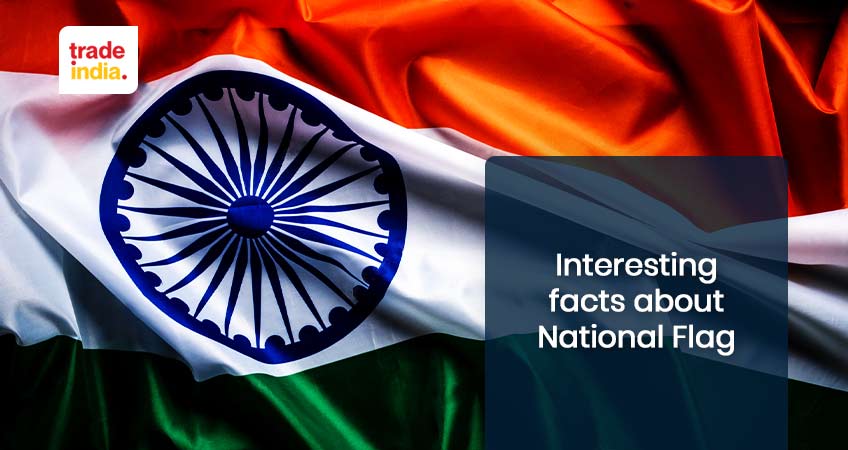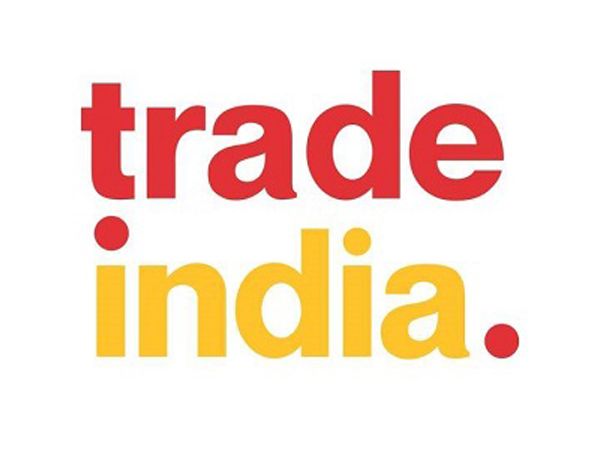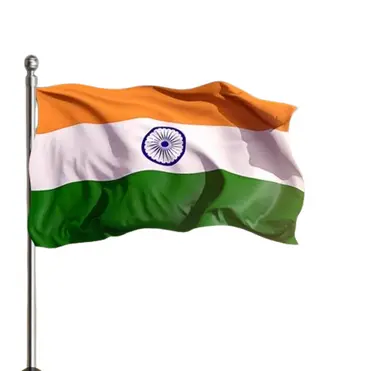12 Indian National Flag Facts Every Indian Should Know

In India, the Indian National Flag symbolizes national pride and is one of the country's most revered symbols. According to former Prime Minister Jawaharlal Nehru, it was "a banner not just for ourselves but a symbol of independence for all the people" when he said it.
The national flag of India must be made of khadi, according to Indian law. The Indian flag code regulates how the flag should be flown. Except for official holidays like Republic Day and Independence Day, private persons were initially barred from flying the Indian flag. The Union Cabinet, on the other hand, made modest adjustments to the way the flag was to be used by private persons. The code was revised to include hoisting as well as other garment kinds.
Tiranga, which means "three colors" or "tricolored," is the name given to the national flag. In a horizontal triangle, the top section is deep saffron, the middle portion is white and the bottom portion is emerald green. The flag's width-to-length ratio is 2:1. The Dharma Chakra, represented by a wheel with 24 navy blue spokes, is located in the center of the white band (Wheel of Law).
- Saffron: Courage and sacrifice are represented by the color saffron.
- White: It's a color that symbolizes honesty, tranquility, and purity. It emphasizes the necessity of keeping the country peaceful.
- Green: Faith and chivalry are symbolized by the color green. It is a sign of plenty, vitality, and long life.
- Ashoka Chakra: On several Ashoka decrees, there appears the Dharma Chakra (Wheel of Law), which has 24 spokes and is known as the Ashoka Chakra or Dharma Chakra.
Top 7 National Flag Manufacturers In India
- Globe Marketing
- M/S Shegal Industries
- Advertising Flag
- Shankar Enterprises
- Tayal Trading Corporation
- Star Rising Global Foundation
- Mohmmad. Shabir Army Store
Dimension of the Indian Flag
Top 12 Interesting Facts About The National Flag
1. State and Military Funerals
When used to drape the coffin or cover the bier of dignitaries or paramilitary troops, it is never buried or burned in the fire.
2. Half-Mast
The Indian National Flag is flown at half-staff as a mark of respect for whatever long the President of India chooses to extend the period of mourning. When the choice is made to lower the flag to half-mast, it must first be raised to its highest point and then carefully lowered. On Republic Day and Independence Day, the flag is never flown half-mast.
3. The Largest National Flag
In Amritsar, Punjab, Punjab, the highest flagpole in the country is erected at the Wagah-Attari border. At 110 meters in length and 24 meters wide, Pakistan's flag may be seen from the city of Lahore and beyond.
4. The United Nations Flag
The national flag of india and the UN Flag can be flown side by side if they are exhibited together. The masts of both flags should be equal in height when they are displayed together.
5. Mt. Everest Is Adorned with The Indian Flag
On May 29, 1953, Tenzing Norgay raised the Indian flag on Mount Everest for the first time. Currently, it is housed in the Rashtrapati Bhavan Museum in New Delhi, India.
6. Indian Flag Lands on The Moon
In 2008, the Chandrayaan-I released the Moon probe, which landed near the Moon's south pole at 8:34 p.m. IST on September 15. To commemorate this historic occasion, the Indian flag was painted on the probe's exterior.
7. Tricolor in Space
In 1984, Wing Commander Rakesh Sharma wore a medallion of the Indian flag on his spacesuit. It had a white strip at the top to symbolize the religious minority, a green strip in the center for Muslims, and a red strip at the bottom for Hindus. There was a spinning wheel at the heart of the flag. Mahatma Gandhi's vision was reflected in this flag.
8. Everyone Has The Right To Display Their Identity
In 2002, the Flag Code was revised to allow the display of the Indian National Flag by anybody, not just the government. It was only in 2002 that private businesses and individuals were granted the right to respectably fly the American flag. Article 19(i)(a) of the Indian Constitution states that it is a basic right of every Indian citizen.
9. Designing of the Indian National Flag
National flag design and fabrication are overseen by the Indian Bureau of Standards (BIS). The BIS laboratories test the material, national flag colour, size, and requirements. BIS approval is required before the flags can be sold.
10. Protocols for Viewing The Indian Flag
The Indian National Flag must be flown by the guidelines listed below at all times.
The flag of India:
- The ground or water should never be touched.
- Not suitable as a covering for any part of the body or as a garment.
- This item cannot be flipped over.
- A person or object cannot be dipped in this.
- Cannot hold anything other than the unfurling flower petals, which are allowed to be held.to
- Useless for writing anything down.
- Flying may only be done between the hours of sunrise and dusk to ensure safety
11. The Designer of the Indian National Flag
Pingali Venkayya, a member of India's liberation struggle, created the Indian National Flag. Andhra Pradesh's Andhra Pradesh is where he was born on August 2, 1876, in the hamlet of Machilipatnam. Aside from being a geologist and an agriculturalist, he also founded a school in his village.
12. Anatomy of A Flag
With a width-to-length ratio of 2:3, India's national flag is a horizontal tricolor. Deep saffron, white, and dark green are all present in equal measure throughout the design. The white part of the flag also features a navy-blue wheel.
History of the Indian National Flag
The current design of the Indian National Flag was approved by the Constituent Assembly on July 22, 1947. The national flag has undergone five design and color changes by this point. It served as the flag of the Dominion of India from August 15, 1947, to January 26, 1950, and the flag of the Republic of India afterward. The phrase "tricolor" in India refers to the national flag of India.
Evolution of the Indian National Flag
On August 7, 1906, the first Indian National Flag was raised. Green, yellow, and red stripes ran the length of it. Eight white lotuses adorned the green stripe, Vandemataram was inscribed in the yellow part, and a sun and moon adorned the red stripe. In Kolkata's Parsee Bagan Square, the flag was raised.
In 1917, during the home Rule agitation, Dr. Annie Besant and Lokmanya Tilak raised the third version of the flag. The horizontal stripes on this flag alternated between green and crimson. There were also seven stars in the Saptarishi arrangement on the asterism in this case. The Union Jack, the flag of the United Kingdom, flew in the upper left corner, while a crescent moon with a star adorned the upper right.
During the All-India Congress Committee meeting in Bezwada in 1921, national flag information was informally adopted (present-day Vijayawada). Red and green were used to represent the Hindu and Muslim communities of India, respectively. A white stripe, as proposed by Mahatma Gandhi, would symbolize India's remaining ethnic groups.
Other Interesting Facts About Indian Tricolor
- The flag of the Republic of India was subsequently adopted.
- Did you know that the current American flag was created in 1916? Pingali Venkayya of Macchilipatnam developed the Indian tricolor flag in 1916.
- Khadi, a locally spun Indian cotton, was used to make the flag a symbol of Indian nationalism and freedom.
- The procedure and requirements for making the flag were given down by the Bureau of Indian Standards, while the Khadi Development and Village Industries Commission hold the right to make it.
- India's national flag and other national insignia are governed by the Flag Code of India.
- Pingali Venkayya drew a flag for Mahatma Gandhi to present to the Indian National Congress in 1921.
Conclusion
By teaching your children about the history and significance of the Indian national flag, you're helping them develop a lifelong appreciation for their country's rich cultural heritage. There are a few things you can do to help kids learn more about your country's flag. You might also explain the importance of the tricolor, namely that the saffron color represents power and courage, the white color represents peace, and the green color represents the fertility and expansion of the Indian country.
FAQs: National Flag
Q. Who designed the Indian national flag?
Ans. Mahatma Gandhi, the leader of the All-India Congress, was presented with the design for the Indian flag in 1921 by Pingali (or Pinglay) Venkayya. Red and green, the colors of Hinduism and Islam, were prominently displayed on them.
Q. What does the three colours of the national flag represent?
Ans. Our national flag's three primary colours are:
- Saffron- is a color that represents the country's steadfastness and fortitude.
- White- The color white represents the dharma chakra, which is a symbol of peace and truth.
- Green- The Indian land is green because it is fertile and grows well.


